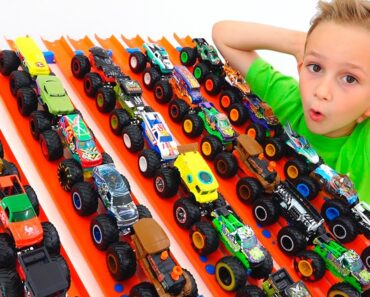When schools were abruptly shuttered last March and students transitioned to learning online, Keira Grant was excited to help teach her seven-year-old son. As her workload dried up due to the pandemic, Grant had more time to help her son with school work and planned a slew of extra STEM experiments. She envisioned the pair gamely tackling his most challenging subject, writing, and even posted up a daily schedule to structure their days.
“It was going to be just like real school,” Grant says, laughing.
But it was never to be. Her son, who loves learning alongside his friends, was not receptive to homeschooling with Mom.
“The schedule we had got ripped down and torn up multiple times. There so were many angry outbursts over having to do Google Classroom stuff that it was absurd,” Grant says. After several exhausting, volatile weeks of arguments and bartering screen time for completed school assignments, Grant and her wife gave up trying to figure out what the barriers were to online learning and decided to opt out.
“I just did not have the skills. I felt completely out to sea. Getting him to put a handful of words down was like pulling teeth,” says Grant. “It was just adding a ton of stress. And he’s in Grade 2. It’s not like university is next year. We just decided we had to let some of it go and focus on keeping our family sane,” she says. “And life got a lot easier.”
If there is one lesson that our sudden, collective immersion in the depths of online learning has imparted it’s that, to quote my tearful five-year-old SK kid, “Having school at home is not very fun.” He said this over one lunch break between the gulping sobs that were soaking his tuna-with-the-crusts-cut-off sandwich (which I still made him eat because I was feeling brittle after failing to get him to read aloud with me earlier).
Call it what you want—e-learning, online school, remote or distance education—it didn’t feel much like “real” school for anyone involved. Parents, teachers and children have perhaps never been so collectively relieved to close the book (er, browser) on an academic year.
“It was all a bit of a social experiment,” says Clare Brett, chair of the department of curriculum, teaching and learning at the Ontario Institute for Studies in Education at the University of Toronto. “We’ve never done anything so quickly or so completely as we are trying to—so there is no other model like this out there.”
It turns out there isn’t anyone, anywhere, who’s winning with this kind of online model. I asked multiple authorities in the field, hoping to be expertly directed to some progressive Scandinavian country that had cracked the code to helping youngsters adapt to virtual school. Surely, they must have all the answers and e-learning tips for parents to solve all our woes here in Canada. But several education professionals, including Brett, told me there isn’t any jurisdiction doing K-12 online schooling “right.”
This particular “learning delivery method”—or a hybrid of alternating classroom days with at-home, online days—is one many of us hope won’t be necessary this fall, when the pandemic’s second wave is forecast to crash.
“There were a lot of gaps,” says Joy Henderson, mother of three boys, ages 9, 12 and 14. She is also a child and youth care practitioner who chairs the advocacy group Scarborough Families for Public Education. Her own family has one computer capable of video conversation that her sons shared in shifts throughout the spring as they slogged unhappily through online classwork, with what she calls “varying degrees of disaster and success.”
But, Henderson says, she knows of many kids who weren’t able to get the devices or programs they needed to connect with their teachers online at all.
“It’s scary to think of all the kids who are being left behind,” she says. “It’s much more than rural communities or kids with disabilities. It’s also impoverished communities, black and Indigenous people. A lot of them can’t engage. And there’s a lot of kids that just don’t do well with online learning.”
At least, not with the emergency, crash-course version of online learning that we scrambled to adapt to in March and April.
“It was just so boring and un-engaging,” says Grant. “Most parents I’ve talked to either gave up or didn’t bother in the first place,” she says. “I haven’t really heard from many people that this approach to learning worked for their kids.”
If there is an ideal age or stage of development for online learning, researchers aren’t certain of what it is. Virtual classrooms are increasingly used at the high school level, but rarely as a main method of teaching elementary or early learners.
“There has never been an instance in North America where any elementary students have had to take online learning,” says Beyhan Farhadi, a high school teacher and post-doctoral visitor at York University in the Faculty of Education. She recently published a doctoral dissertation on online learning in the Toronto District School Board, and her current post-doc research looks at the development of online education policy.
It isn’t surprising, then, that there is no data on what age children ought to be before we can expect them to function well in a virtual classroom. The rough consensus emerging among teaching experts is that the older the child is, the more likely it is that he or she will be able to engage in some form of online learning. But the approach isn’t a fit for everyone, students or teachers alike. This all depends on the resources and materials available, what the teacher chooses to share as part of the curriculum, and the individual kid’s age, personality, interest level and engagement with the subject matter.
“There is some evidence that shows little kids, as young as three, can interact with apps,” says Deborah Stipek, a Stanford University expert in early childhood and elementary education. But to stay engaged for even short lengths of time, young students need live interactivity—also called synchronous learning—and lots of activities. Stipek’s recommendation to teachers trying to engage kindergarten students is to focus on playing virtual games such as Simon Says, repeating silly lines or counting jumping jacks. But imparting meaningful kindergarten education over broadband, she says, will be difficult.
Tiffany Gallagher is a professor of education at Brock University and the director of the Brock Learning Lab, a K-12 tutoring program run with the help of teaching students in Brock’s Faculty of Education. She says that the students she has observed to be most suited to online learning during the pandemic are between the ages of 8 and 13. In addition to being able to figure out how to access and log in to the technology online, Gallagher says they need to have basic keyboarding and mouse or trackpad skills (which are next-level for kids who have grown up swiping iPads). They need to be able to navigate between windows and find the microphone and mute buttons. They should know how to get rid of a pop-up, find a settings preference, and be able to use search tools without assistance. By age eight, most kids also have the discipline to maintain focus for longer periods of time, but younger children only have about 15 minutes or so of focus before they zone out and may need reminding—or a study break.
“Our younger learners just don’t have those skills,” she says. “It’s so easy for them to be distracted.”
She points out that, in the classroom, many teachers offer exercise balls or fidget spinners for students who need to do something physical to help them focus. “Their bodies need that small muscle movement to get their brain to engage,” Gallagher says.
But introducing those at home, a place already rife with enticing distractions (other children, parents who are also Zooming, the family dog barking) may make the difficulties of online learning more unwieldy for overtaxed parents. She suggests having a dedicated room or space for online learning if possible (even if it’s just a tiny nook that makes learning time separate from other family activities). She also suggests offering kids time for mindful yet engaging activities off screen to break from school work. Think doodling, listening to music, playing with a Rubik’s cube, doing a puzzle, colouring books, or doing a word search. Physical activities like a dance break or stretching can give them an outlet before or after a lesson.
Farhadi, who teaches high school courses in person and online, says forcing elementary students to learn online isn’t “pedagogically sound,” nor is it sustainable in the longer term. “Elementary students need to engage with all their senses,” she says. “They need face-to-face schools.”
She opted to take her two children, ages 4 and 8, out of online classes. “We didn’t engage in the online learning activities because it requires so much coaching on the part of the parents,” she says. “We don’t have time to sit there and teach Grade 3.”
Whitby, Ont. mom Jaime Smith, a self-professed “keener” at the outset of our online learning experiment, was initially prepared to sit at the computer beside her son, Chuck, for as long as it took for him to complete his work. Chuck, who is eight, has autism. He is usually paired with an education assistant who helps him throughout the day. Despite his teacher’s best efforts, there was no real way to make all of the class assignments accessible for Chuck online. Work that should have taken an hour or less dragged on and on, provoked arguments and stressed out both Chuck and his mother, who was, like her husband, also juggling full-time work from home and helping homeschool two older kids.
The Smiths ultimately declared virtual learning a bust for Chuck. “Sitting still at a computer is just not a strength for him,” Smith says. “He gets overwhelmed with the number of tasks and it’s always a fight. His attention span is 10 or 15 minutes and then he needs to get moving.”
Experts who study how young children learn say it is unreasonable to expect them to sit still for any real length of time at a computer.
“We teach tutors that a child can’t sit and listen to you talk or read for an hour,” says Gallagher, the Brock Learning Lab director. Tutors there put on short YouTube movement or exercise videos to get moving. To be engaged online, young elementary learners need activities that mimic the play-based learning they do in the classroom as opposed to assignments to go off and complete. They also require frequent movement breaks, and, perhaps, rewards.
“Give them anything that will help them pay attention that won’t harm them,” says, Stipek, the Stanford expert who has also authored a book on how to motivate kids to learn. She agrees that snacks during video classes or story time are OK, as is a doodle pad or small toy. (Graham crackers to munch during Zoom calls and promises of baking muffins later are two of her go-to’s). If rewards don’t work, though, parents shouldn’t push, Stipek says.
“Encourage them, but instead of thinking, ‘What’s wrong with my child?’, think ‘What’s wrong with this activity?’”
It may be that the best opportunities for young kids to learn from home are simply engaging in everyday activities, from baking to counting coins or playing simple card games, Stipek says. She suggests having kids count forks at the dinner table or buttons on a shirt, or point out shapes they see on signs during neighborhood walks.
“Provide children with as much opportunity to learn things as you can without making them sit in front of a computer,” Stipek says. “Never force it. It has to be playful and comfortable for the child. Neither the parent or the child should feel stressed. If either are, stop, take a break, get a snack.”
That said, it is normal for parents to feel frustrated when helping with schoolwork, says Gallagher. “The level of patience required to homeschool your child is profound. This is why it takes two years to train a teacher,” she says. “Parents have been expected to step into that role overnight. Don’t feel like you have to be an expert.”
If homeschooling isn’t working in your house, you can always consider backing off of curriculum-based learning, as Keira Grant did, and encourage your kids to explore their passions instead. (At Grant’s house, her son is devouring his Dogman comics and even writing some of his own.)
Nipissing University professor Carlo Ricci says this is how all kids should actually learn anyhow. “Powerful learning happens when people are allowed to follow their interests and their passions,” says Ricci. He says kids will self-discover what they need to know for their particular stage when their interests require it. “Just because they’re not in school, learning the curriculum, doesn’t mean they aren’t learning anything,” he says.
His advice to frazzled parents is don’t panic—set schoolwork aside, and try to enjoy some extra time with the kids, if your family can swing it. If possible, let the learner decide what to do next, whether that’s an interactive learning game, listening to an audiobook while colouring, or hunting for insects at the park.
“Most of the things we learn are outside the context of mainstream schooling,” he says. That’s why it’s important to allow kids to learn in ways that engage them about things they’re passionate about. Even if e-learning drags on, in some form or another, much longer than any of us want, Ricci recommends going easy on ourselves—and our kids. “Focus on your wellbeing and their wellbeing,” he says. “Everything else will work itself out.”
Editor’s note:
We hope you enjoyed reading this article from Today’s Parent. We’re working hard to provide our readers with daily digital articles that aim to inform, inspire and entertain you.
But content is not free. It’s built on the hard work and dedication of writers, editors and production staff. Can we ask for your support? We are currently offering 3 issues of the print edition of Today’s Parent for only $5. A subscription also makes a great gift for that new parent in your life.
Our magazine has endured for more than 35 years by investing in important parenting stories. If you can, please make a contribution to our continued future and subscribe here.
Thank you.
Kim Shiffman
Editor-in-Chief, Today’s Parent
































